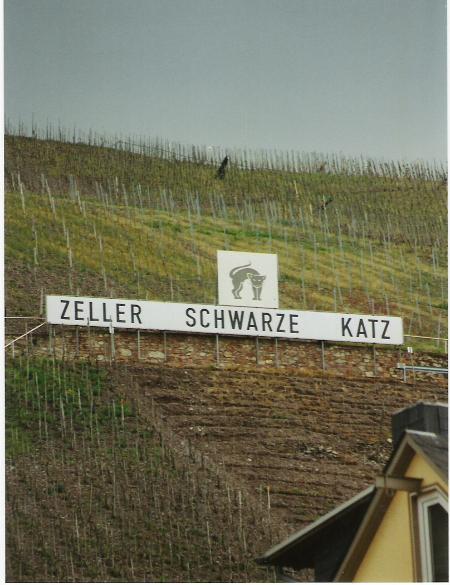 Exploring the Mosel from Bernkastel to Cochem
Exploring the Mosel from Bernkastel to Cochem
By Carol Ware Duff, Editor
A visually pleasant and enjoyable way to view the vineyards and old Roman towns along the Mosel is a leisurely drive from Bernkastel to Cochem. Leaving Bernkastel, with its very own castle overlooking the town, the road winds through the Mosel River valley with the steep vine covered banks on both sides of the river. Driving out of Bernkastel, heading toward the Rhine, you first pass the town of Grach. The Gracher Himmelrich vineyard stretches above town, long a producer of world class Rieslings as are so many others you will pass.
A short time later, you come to Zeltingen, an attractive riverside town filled with small hotels, guest houses and wine makers. Stretching above town is Zeltingen Sonnenuhr, the famous vineyard noted for its wonderful sundial. It was built In 1620 by an Abbot of the Kloister Himmerods, north of the Mosel toward Wittlich. The sundial, the best preserved on the Mosel, gave the world-famous wine producing area its name.
The winding drive will take the explorer down the Mosel, which seems rather disorienting as the river flows in a northeasterly direction, which seems to defy most laws of river flow. Actually, the Mosel can be found to flow in any imaginable direction at some time or another as it snakes it way toward Koblenz and the Rhine.
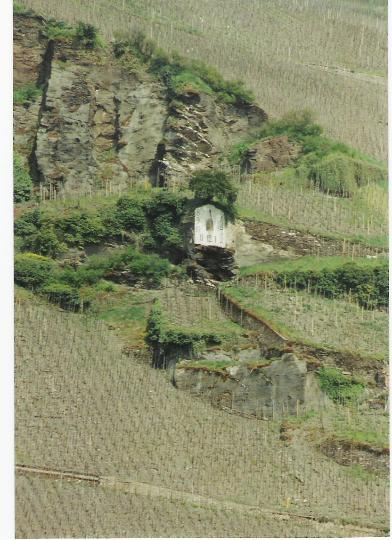
Small villages dot both sides of the river and often the drive will take you across the river as the road ends at one village or some impassable barrier forces a crossing. At some points, there are small ferries that will take cars across to the other side to visit a neighboring village. Villages vary from the picturesque Bernkastel, almost like a Disney theme park to working towns always about the days business but still retaining a look of bygone times.
All along the way, the slate covered hills on both sides are covered in grape vines, which in the early spring are nothing more than small shoots with a leaf or two carefully tied into a heart shaped configuration. In late fall and these same vines will be laden with Riesling and other varieties of grapes ready for handpicking and pressing for wine production. Between the first and forth centuries, the Romans did extensive terracing of the Mosel valley take advantage of the unique soils and the special climate moderated by the effect of the river.
Each terraced area is a flat surface is only about three meters wide with the next supporting wall of rocks behind it to form the next level. The terraces will cover all areas of the hill that have the soil to support the root system of the vine. These small areas of soil are sometimes like islands on the rocky hillsides. In some locations, the vineyards are at such a steep incline that the individually terraced layers are connected by ladders or little metal tracks on which the vintners can ride up and down the
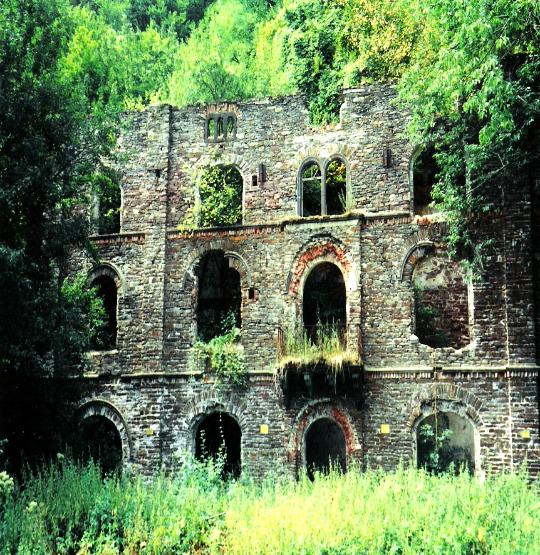
steep slopes, on little carts, to tend the vines and harvest the grapes.
The slopes on which the vines are grown and carefully tended are so steep that the perfect vine tender might have been a goat. The earliest descriptions of the area are from the Roman writer, Ausonius who described the beauty of the Mosel valley in one of his best known poems. Though only vestiges of the Roman era remain, little else seems to have changed since that time. Post Roman vintners, the earliest being monks from the many monasteries that line the Mosel, have maintained the carefully terracing.
Though many of the poorer producing areas have returned to forest, the finest vineyards are still maintained with vigilance. The sides of the vine-covered hills that usually produce the best grapes are the ones that receive direct sun on a southern exposure. The natural bedrock of the area is dark gray slate and often litters the ground under the vines and serves as an extender of the warmth of the sun.
The slate holds heat of the day well after sundown and thus produces some extra growing energy and in the late fall extends the growing season, allowing the grapes to produce more sugar. The longer the grapes have to bask in the sun, the sweeter will be the grape. The slate also lends minerals to the soil and is absorbed by the roots, which in turn allows the grape to take on the subtle flavor, terroir, of the soil in which its roots are anchored.
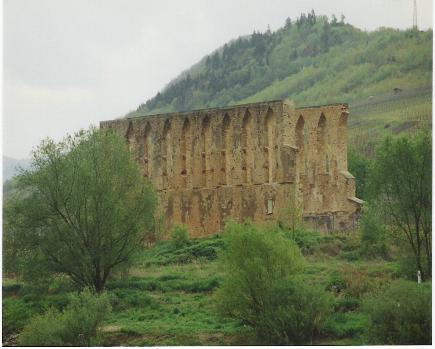
Some villages are more “Romanesque” than others. There may be a telltale Roman watchtower and if one walks the streets that wind away from the river, into the rear of the villages that extend to the bottom of the hill, there will be very narrow, slightly winding streets that do not allow car traffic. In the Roman occupied days, some of the narrow roads would have allowed cart travel and have at their widest been just the width of two horses traveling side by side.
Many other very narrow twisting village roads were undoubtedly only for pedestrian travel. Today, many of the Mosel villages have streets on which no cars are allowed and the walker can stroll about, casually looking in windows filled with wine bottles, artistically arranged with the fermented juices of the region, without fear of being moved to the side by a passing automobile.
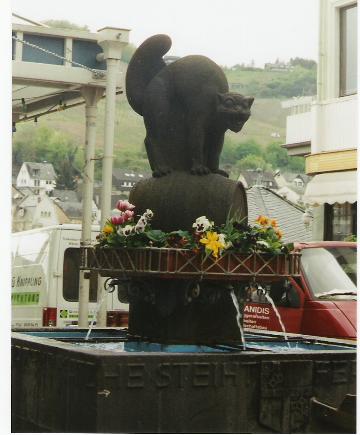
On the steepest hillsides, Roman arches are placed strategically along the stone terracing which allowed for stability of the terracing walls. That the Roman arches and carefully arranged stones still remain intact after so many centuries shows the quality of their engineering. Situated among the terraced walls the traveler can discover caves, which extend into the hillsides.
These were used by the Romans to store their tools and to provide shelter for the lucky slave overseers during the hot summer months. Along the way, the explorer will go past such towns as Urzig, Alf, and Traben-Trarbach. Following the river, one can see the large ruins of a Roman villa. Hidden in the shrubs at the side of the road, it has gone unnoticed for centuries and still goes unnoticed today. As you follow a large turn in the river you can view what may have been a basilica, which was probably placed over the ruins of a Roman temple and later a church.
If you look with a careful eye in many of the villages, you can see where city walls were located and have since been turned into the sides of buildings now used for homes and shops. For instance, as you leave Cochem, to take the winding road that will take you to the autobahn, you pass through arches, which were part of the ancient Roman city wall.
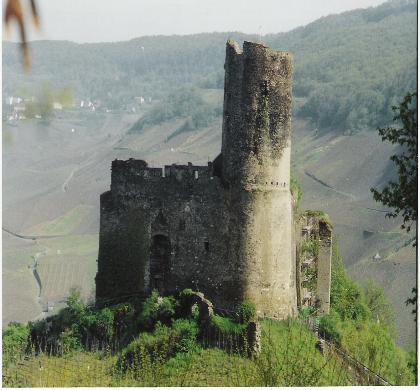
The quaint village of Zell is where the Zeller Schwarze Katz wines are produced. On the hill, behind the lovely former Roman city, are the white letters, in very large words, that identify the grape growing region. The shop windows in town are filled with the local product as well as souvenir cat reminders of the name of the wine.
Along the first road up from the river is a wonderful statue of a black, of course, cat with its arched back and opened mouth displaying its perfectly huge teeth. Maybe he is trying to protect his town from invaders. This large figure dominates a fountain and aptly represents the area. Zell has public restrooms by the river and gets excellent marks as open public restrooms in Europe are a rare find.
For those who prefer quasi-Turkish cuisine to that of the German interpretation of pizzerias there are two donner kabobs on the mainly pedestrian street just up from the road that runs by the village. Zell welcomes the tourist without being too “touristy.”
The traffic on the river is in itself entertaining to watch. Long barges, sometimes two that are connected, carrying coal, and always at least one car, steam up or down the river. There are also the advertised “romantic” tourist boats that connect various points along the river and offer a fine view of villages, vineyards, and occasional castle that commands the highest point near a few of the villages.
Short boat rides can be arranged in many of the larger villages and there are usually signs with hours of tours and costs posted at the ticket booth, which will be 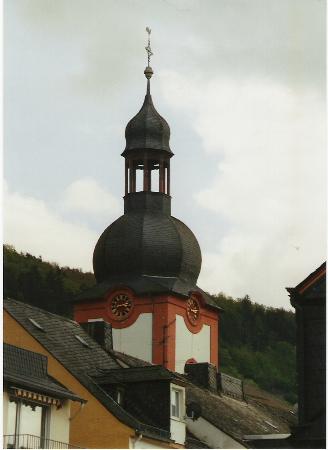 found beside the river. These tours offer an opportunity for the driver of the car to also enjoy the sights as many of the interesting views are up high on the slopes and difficult for the driver to view safely. Large Trumpeter swans hug the banks and keep watch over their territories.
found beside the river. These tours offer an opportunity for the driver of the car to also enjoy the sights as many of the interesting views are up high on the slopes and difficult for the driver to view safely. Large Trumpeter swans hug the banks and keep watch over their territories.
The area along either side of the river is lined with wonderful bike trails for those who prefer a more leisurely pace. All villages have camping parks in which individual sites seemed to be claimed for much of the season as they are not only trailers, but also have tented areas adjacent to them and perhaps a bit of yard which gets mowed.
When one sees a ruined castle at the highest vantage point on the river, he or she can imagine that the castle was once a Roman villa, which has been claimed, been built on top of, and renovated many times over the past centuries, as have others in all formerly Roman occupied areas of Europe. The Romans always built with a keen eye for the advantage over invaders. The difference in appearance from other areas of this nature in Europe is simply due to what stone or building material was available locally.
The indigenous slate lends toward a very beautiful and often quaint look. Many of the building have
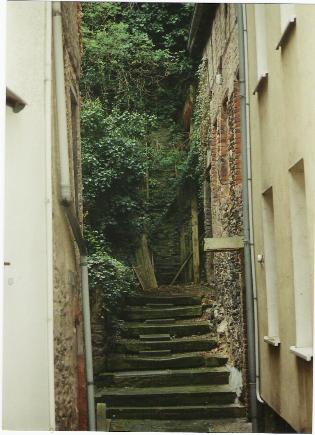
been “improved” with plastering and cementing over the original slate walls, which makes the originals even more wonderful to view.
Leaving the Mosel at the large village of Cochem will take the traveler first through forests and as you climb upwards away from the river valley, eventually to areas, which are, much flatter and fit for grazing. You leave the forest behind and drive through meadows and fields that are cultivated with hay, wheat, and other grains.
On the right side of this winding road you will see, and if you have your car windows down, will hear a gushing stream, or perhaps natural aqueduct that carries rushing water down to the river. In the springtime water falls vigorously from the steep cliffs to join this water source. You feel as though you have left Germany and are on a trek through West Virginia.
This road will take you back to the A road on which you can travel in the direction of Koblenz or south to Trier, which after the fall of Rome became the center of Roman rule. The Mosel River can be explored in small segments or larger ones according to the needs of the explorers. The Mosel drive offers a pleasant respite with the constant opportunity to view something that still remains of the ancient Romans, and illustrates what effective architects they were.
COPYRIGHT CAROL WARE DUFF

Carol graduated from Riverside White Cross School of Nursing in Columbus, Ohio and received her diploma as a registered nurse. She attended Bowling Green State University where she received a Bachelor of Arts Degree in History and Literature. She attended the University of Toledo, College of Nursing, and received a Master’s of Nursing Science Degree as an Educator.
She has traveled extensively, is a photographer, and writes on medical issues. Carol has three children RJ, Katherine, and Stephen – one daughter-in-law; Katie – two granddaughters; Isabella Marianna and Zoe Olivia – and one grandson, Alexander Paul. She also shares her life with her husband Gordon Duff, many cats, and two rescues.
ATTENTION READERS
We See The World From All Sides and Want YOU To Be Fully InformedIn fact, intentional disinformation is a disgraceful scourge in media today. So to assuage any possible errant incorrect information posted herein, we strongly encourage you to seek corroboration from other non-VT sources before forming an educated opinion.
About VT - Policies & Disclosures - Comment Policy



